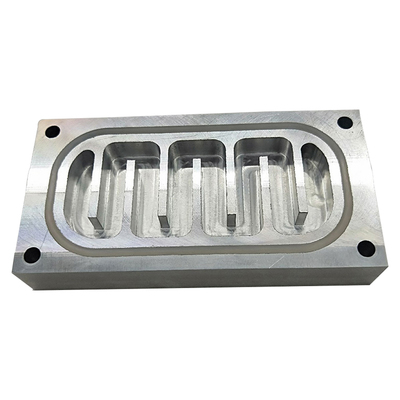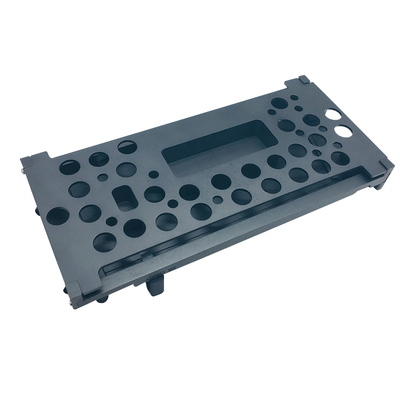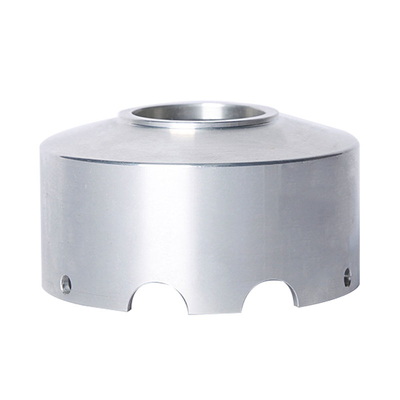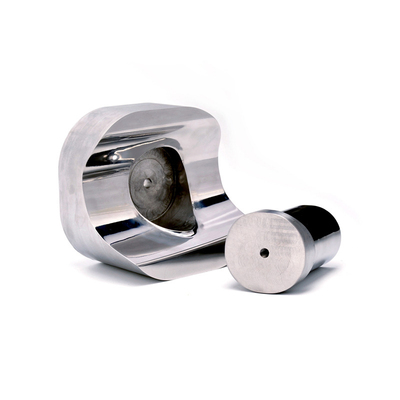Development and Application of Grinding Technology in Sheet Metal Manufacturing Industry
In today's economic development and globalization, advanced technologies and concepts from all walks of life can be quickly spread and used in the country. In the sheet metal manufacturing industry, advanced manufacturing equipment such as laser cutting and punching has been widely used in China, and the deburring and chamfering after these processes have also developed and improved.
Traditional deburring method
In the traditional sheet metal processing industry, the deburring method has always been manual processing. Most sheet metal and stamping companies use files, scrapers, or electric or pneumatic tools to polish the burr. After laser cutting and CNC punching, the outer contour may be handled in this way, while the inner contour or special-shaped grooves are difficult to handle manually. , And it is difficult to guarantee the consistency of the treatment effect.
Traditional vibration grinding, magnetic grinding, ultrasonic grinding, electrochemical grinding and other technologies are basically useless in the sheet metal manufacturing industry because of their low grinding force. More than ten years ago, in the woodworking machinery industry, wide-width sanding machines were widely used for polishing and polishing the surface of wooden boards. Some smart sheet metal production companies also used them for drawing and deburring the surface of metal sheets. Greatly improve the processing efficiency. The technology of the wide-width sanding belt machine is to press the high-speed wide-width sanding belt on the metal surface with a rubber roller, so that the sanding belt contacts the surface of the metal workpiece first. When the workpiece is transported forward, the sanding belt will grind the surface of the workpiece with equal thickness. Regular and beautiful silk patterns appear on the surface of the workpiece. However, it is difficult to chamfer the edge of the workpiece contour, especially the inner contour, because of the equal thickness grinding of the wide abrasive belt. Sometimes, secondary burrs are poured into the holes, so this technology cannot meet the process requirements of deburring and rounding.
Automated grinding technology
With the development of the economy, the labor cost has increased significantly, and people's requirements for quality continue to increase, and the demand for improvement of the polishing process of sheet metal parts is becoming more and more urgent. In 2014, Suzhou Zhongdao Grinding Technology Co., Ltd. was born and became a domestic enterprise specializing in the research and development of grinding automation technology. In the past few years, from the burrs produced by laser cutting and blanking, flame cutting and plasma cutting slag, to the burrs after profile cutting, as well as the burrs and flashes of aluminum die castings and formed parts, Suzhou Zengdao Grinding Technology Co., Ltd. has developed corresponding technical solutions, and the automatic grinding technology has been continuously upgraded. While solving the burr problem for many industries and enterprises, it also brings technological innovations and effectively reduces labor costs.
Removal technology of section burr after profile cutting
The burr on the section of the aluminum profile after being cut has been manually removed by the worker with a scraper, which is extremely inefficient, and it is difficult to ensure that the profile burr is completely removed, which poses a serious quality risk. The appearance of the automatic deburring machine for profiles completely subverted the original process. This type of equipment uses a wire roller brush with a wire diameter of 0.1-0.3 mm as the abrasive. Through high-speed rotation and revolution, the abrasive is penetrated into the profile by 2-3 mm, and the profile profile is uniformly polished. The burr can be removed in about 3 seconds. The efficiency of this model is about dozens of times that of manual labor. The emergence of this grinding technology not only solves the quality problem of burr removal in the aluminum profile industry, but also greatly reduces the manufacturing cost of the industry.
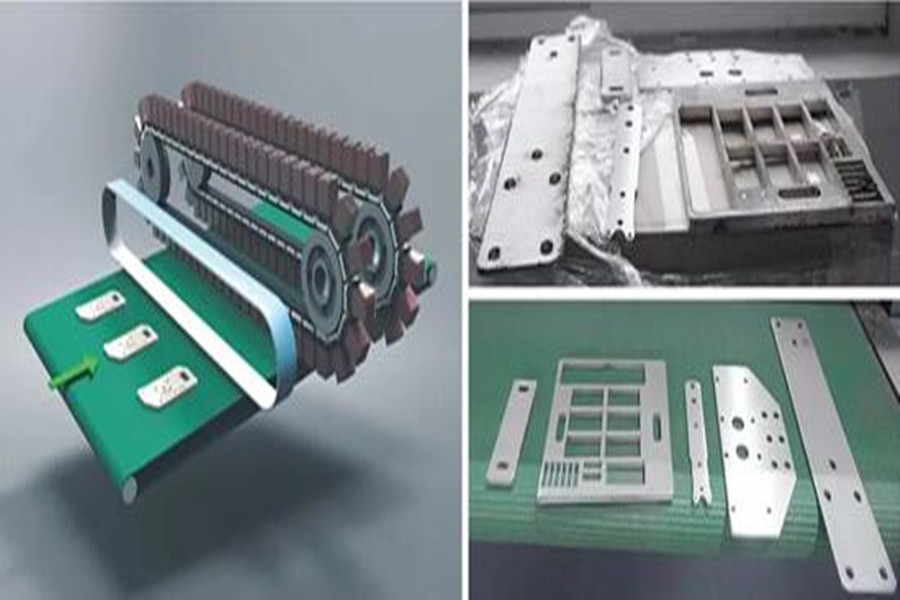
Burr removal technology in the hole of porous parts after punching
A key component in the communication antenna equipment is the porous aluminum plate. Electrical signals must be transmitted through these holes. During the transmission process, if these holes have burrs and sharp edges, they will cause concentrated discharge and weaken the signal. This is a technical requirement. not allowed. The original process is coated aluminum plate-stamping-tearing film-disc brush deburring-cleaning-drying-surface protection-electroplating. The latest process is film-coated aluminum plate-stamping-roller brush deburring-film tearing-electroplating. The new roller brush deburring technology uses roller brush type abrasives with a new sunflower structure and vacuum adsorption technology. The abrasive is made of coated alumina or silicon carbide, and the width of the emery cloth is 4-5mm. When the abrasive is rotated, the emery cloth can penetrate deep into the hole, so that when the workpiece is covered with a film, the abrasive can remove burrs on the contour edge without hurting The surface of the material has a protective film, and the burr removal is very uniform. The specific effect is shown in Figure 2. It can be seen from the improved process that three processes are omitted, efficiency is greatly improved, and costs are reduced.
Burr removal technology after laser cutting
The burrs produced by laser cutting are relatively hard, especially aluminum and stainless steel. The traditional removal process is electric or pneumatic grinding. The latest technology is to first remove the burrs and slag on the surface of the plate with a triangular sanding belt, and then use a sand strip for sharp edge chamfering. The triangular belt mechanism is designed with an inclination angle of 1°-3°, which facilitates the entry of the workpiece and realizes the gradual grinding of the burrs. The belt mechanism has its own pressure adjustment system, which automatically adjusts the grinding force for the burrs of different heights protruding from various parts of the workpiece. When the belt is ground, the contour becomes sharp, and it must go through the sand bar to penetrate into the inner shape, just like a brushing motion, chamfering the sharp edges to make the inner shape round and smooth.
Slag removal technology generated by flame cutting or plasma cutting
The slag produced by thermal processing is large, and the welding area with the metal substrate is large, and it needs a large grinding force to remove it. It is time-consuming and labor-intensive to use an angle grinder for manual polishing on a daily basis. The new slag cleaning hammer technology uses a special metal hammer and a special elastic mechanism, which is installed on a roller brush or a joint belt. When running at high speed, it is like a small hammer that continues to beat the slag until the slag removal is complete. This technology integrates automatic feeding and control systems to perfectly realize the automatic removal of slag in one feeding. While improving efficiency and quality, it also reduces labor costs.
Concluding remarks
With the rapid development of industrial automation, information technology, and intelligent technology, grinding technology is also constantly advancing. The people who work in the grinding field are full of craftsmanship and are working hard and forging ahead to achieve the goal of "Made in China 2025"!
Link to this article: Development and Application of Grinding Technology in Sheet Metal Manufacturing Industry
Reprint Statement: If there are no special instructions, all articles on this site are original. Please indicate the source for reprinting:https://www.cncmachiningptj.com/,thanks!
 PTJ® provides a full range of Custom Precision cnc machining china services.ISO 9001:2015 &AS-9100 certified. 3, 4 and 5-axis rapid precision CNC machining services including milling, sheet metal to customer specifications,Capable of metal & plastic machined parts with +/-0.005 mm tolerance.Secondary services include CNC and conventional grinding, laser cutting,drilling,die casting,sheet metal and stamping.Providing prototypes, full production runs, technical support and full inspection.Serves the automotive, aerospace, mold&fixture,led lighting,medical,bicycle, and consumer electronics industries. On-time delivery.Tell us a little about your project’s budget and expected delivery time. We will strategize with you to provide the most cost-effective services to help you reach your target,Welcome to Contact us ( [email protected] ) directly for your new project.
PTJ® provides a full range of Custom Precision cnc machining china services.ISO 9001:2015 &AS-9100 certified. 3, 4 and 5-axis rapid precision CNC machining services including milling, sheet metal to customer specifications,Capable of metal & plastic machined parts with +/-0.005 mm tolerance.Secondary services include CNC and conventional grinding, laser cutting,drilling,die casting,sheet metal and stamping.Providing prototypes, full production runs, technical support and full inspection.Serves the automotive, aerospace, mold&fixture,led lighting,medical,bicycle, and consumer electronics industries. On-time delivery.Tell us a little about your project’s budget and expected delivery time. We will strategize with you to provide the most cost-effective services to help you reach your target,Welcome to Contact us ( [email protected] ) directly for your new project.

- 5 Axis Machining
- Cnc Milling
- Cnc Turning
- Machining Industries
- Machining Process
- Surface Treatment
- Metal Machining
- Plastic Machining
- Powder Metallurgy Mold
- Die Casting
- Parts Gallery
- Auto Metal Parts
- Machinery Parts
- LED Heatsink
- Building Parts
- Mobile Parts
- Medical Parts
- Electronic Parts
- Tailored Machining
- Bicycle Parts
- Aluminum Machining
- Titanium Machining
- Stainless Steel Machining
- Copper Machining
- Brass Machining
- Super Alloy Machining
- Peek Machining
- UHMW Machining
- Unilate Machining
- PA6 Machining
- PPS Machining
- Teflon Machining
- Inconel Machining
- Tool Steel Machining
- More Material

